Visiting East Bhutan. In the world of tourism, Bhutan is often an afterthought. Miniscule Bhutan located at the end of the Eastern Himalaya is squeezed between twin population bombs of China and India. Only 700,000 people call Bhutan home. Approximately 250,000 tourists made a visit to Bhutan in 2017, with 180,000 visiting from the region (mostly India) with another 71,000 international visitors. This ranks
Bhutan at around 150th when it comes to tourist arrivals (France sees about 84 million tourists a year). Approximately 80% of visitors spend their time in the west, visiting the cultural highlights of Thimpu, Paro, and Punakha.
What you need to know when you visit Bhutan.
But what about the east of Bhutan, where only 20% of the visitors make their way? In the east, you will find the same mountainous beauty, warm people, and rich cultural history. But what you won’t see are the tourists. Well, literally only a handful. It was only at the hotel where I met some fellow travelers, but during the day, I was on my own.
I have traveled to Bhutan three times, approximately spending a month in the country. I have also worked with a local travel operator as a consultant for three years. If you need advice or help, planning a trip to Bhutan, please email me at Ric @ GlobalGaz.com
How To Get To The East
There are three ways to get to the east of Bhutan.
Driving
All international flights arrive in Bhutan’s only international airport, Paro, located in the west. And you with your guide and driver can make your way by car to the east. But expect a long drive, over winding roads that hugs the sides of mountains, sometimes very rough roads, and occasional construction detours.
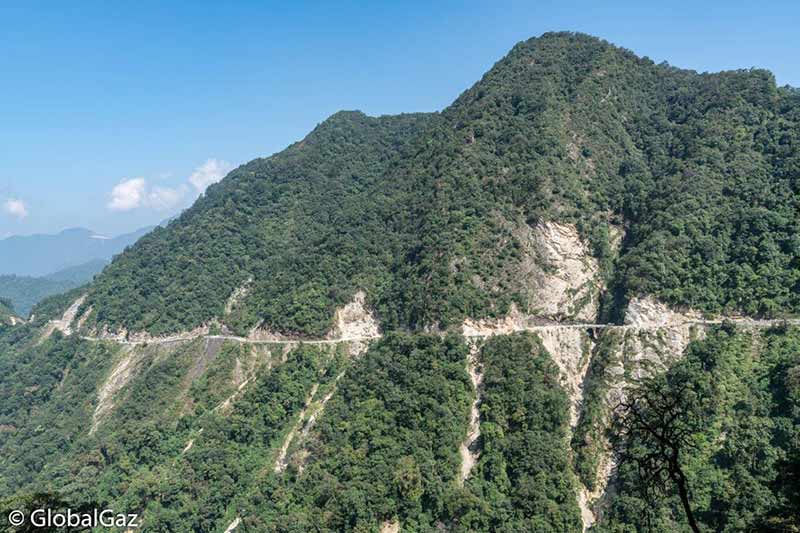
The roads are carved on the sides of mountains
For example, at one time, 10 km (6 miles) in the car took 45 minutes. If you were to drive straight to Trashigang, one of the largest towns in the east, it would take around 20 hours, yet it is only several hundred kilometers.
Flying
A much quicker option is to fly from Paro to Trashigang. Trashigang is one of three domestic airports in Bhutan. The flight will set you back about xx and only takes xx minutes, quite a considerable time savings compared to the drive. Most people exploring the east, will fly one way, and then drive back the other way.
Entering From India
There are three border crossings from India to Bhutan (none with China); Phuentsholing (the far west), Gelephu (central), and Samdrup Jongkhar (the gateway to the east). Phuentsholing is the most common crossing, with many Indians crossing here from the state of West Bengal. Gelephu and Samdrup Jongkhar are seldomly used. But Samdrup Jongkhar serves as a great gateway to the east and can be combined with an interesting visit to the Assam state in the northeast of India. So for instance, when Druk Air flies from Bangkok to Paro, it actually makes a stop in Guwahati the capital of Assam. I deplaned here and spent several days exploring Guwahati and Shillong. You can then take a taxi for about three hours for 4200 Rupees to the Samdrup Jongkhar crossing. When exiting India, you will need a photocopy of your passport and visa to provide to the Indian officials.
Samdrup Jongkhar
When crossing the Samdrup Jongkhar border you will need to present your passport and visa on arrival letter that your tourist company would have arranged. Your guide and driver will meet you at the border.
This town of 10,000 sits at the border with India. There is little to do in Samdrup Jongkhar. But it is a good place to get your Bhutanese SIM card and some local currency, Ngultrum, at the ATM. If you are departing for Trashigang, expect a long drive. The hotels I stayed at in Samdrip Jongkar were clean and simple.
Trashigang
The ride from Samdrup Jongkhar will take about eight hours plus with a stop or two to stretch your legs. The ride is often twisting on the sides of mountains on dirt and gravel roads. Endless forests of deep green trees coat the undulating mountains. The roads in east Bhutan are often in a near constant state of construction with Indian citizens comprising the work crew. Occasionally, we waited for some time as construction crews worked on the roads resulting in 30-60 minute delays.
We arrived in Trashigang in evening and after a Bhutanese meal at the hotel and then headed off to bed.
Rangjung Woesel Choeling Monastery
The next day we headed off to this monastery. Rangjung Woesel Choeling Monastery was founded recently in 1989 and is a vibrant religious site with over 300 monks living and studying there. I stood to the side and watched as adherents circumambulate clockwise around the monastery deep in thought and prayer. I greeted a couple of them in Dzongha and received a hospitable welcome.
Lunch Time
We arrived at the small village where my guide grew up. The villagers had gathered en masse, volunteering on the construction of a new monastery. My guide, Sonam, found his aunt and we picnicked next to her house looking over the plunging valley. The meal ended with several sips of Ara, the local rice wine made in Bhutan. Sonam’s aunt claimed she made the best Ara in the village. I think she might be correct.
After thanks Sonam’s aunt for her hospitality, I wanted to learn a little more about her. She was in her 50s and had spent her entire life living in this village of less than 500 people on the side of the mountain. She had her own home, farm, and family. She had been to Thimpu the capital but had never left the country. And until 20 years ago, had lived without electricity, telephone, or internet. I asked her a couple of questions about the USA, Donald Trump, and Star Wars. She was blissfully unaware, not familiar with any of these queries. In effect, cut off from the global community.
Trashigang Dzong
This 17th century Dzong hovers on the side of a mountain. This fortress was built to defend against neighboring Tibetan invaders. The Dzong is nearing completion after a multi-year renovation and I was fortunate to be able to visit.
Turning a corner within the monastery I discovered a group of young monks creating several offerings that will be presented during some ceremonies. I marveled at a monastery at their craftsmanship as they free-handed their creations.
Drametse Monastery
We spent another morning driving on roads clenching to the sides of mountains, glimpsing small villages with terraces rice fields. We arrived at the 16th century Drametse Monastery after a couple of hours. Unfortunately, the monastery was under renovation, but adjacent to it was a classroom brimming with novice monks draped in deep maroon robes. They sat in rows on worn wooden floors with Buddhist scriptures laid out before them. While I had witnessed this before, I sat in quiet awe as I watched the boys chant. It was magical.
The Statue of Guru Padmasambhava
Towering at over 173 feet, a stately golden statue of Guru Padmasambhava reigns over this valley. The Guru better known as Guru Rinpoche in Bhutan was an 8th century Indian Buddhist master. He is highly regarded in Bhutan and is revered for founding Tiger’s Nest, a monastery hanging onto the side of a cliff in Paro and is considered Bhutan’s most famous landmark.
The statue was constructed in 2016, and if visiting you can enter the statue which is a multi-floor, ornate monastery. Make your way to the top for an outside view of the valley. Next to the statue is another monastery housing many monks. I visited these young monks during their lunch break and watched them play a game sort of like marbles.
We stopped for another picnic today overlooking another valley. We parked the car in the equivalent of some random villager’s home. The man noted us, and instead of shooing us away, he invited us to set up the picnic directly on his lawn. I leisurely sipped tea and enjoyed my meal while overlooking green terraces and admiring the meandering farm animals. The farmer introduced me to his pomegranate tree and presented me with several fresh pieces.
N Khoma Village (Lhunstse District)
On the way to the hotel, we stopped at this small village. It is well known for its weaving culture. Women continue the age-old tradition of weaving silk wares. I admired a multi-colored kira, the national dress for Bhutanese women, that rested on a loom. Another lady showcased a score of silk scarves, each one takes a week to create. An excellent place to pick up an authentic souvenir or gift. And our guide jokingly/or half-jokingly informed us that this was a great place to find a wife.
Travel To Bumthang
Driving further west, it is typical that you would visit Bumthang which is in the central part of Bhutan. This area is incredibly rich in monasteries and is well worth a couple of days before you head to the western part of the country. And further west, is my favorite Dzong in Trongsa.
Check out the amazing faces of Bhutan. And Part II, amazing faces.
And check out Bhutan’s most famous landmark, Tiger’s Nest.
And visit the Trongsa Dzong.
Visiting East Bhutan
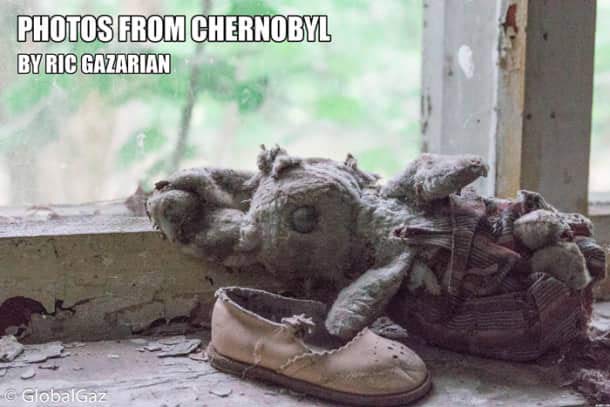
Photos From Chernobyl
Sign up to receive your free copy of Photos From Chernobyl. Over 100 photos from the Chernobyl Exclusion Zone.








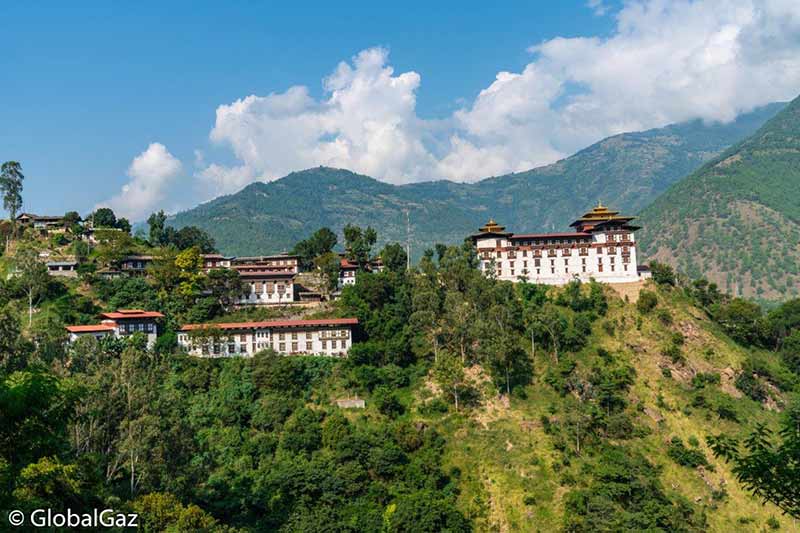







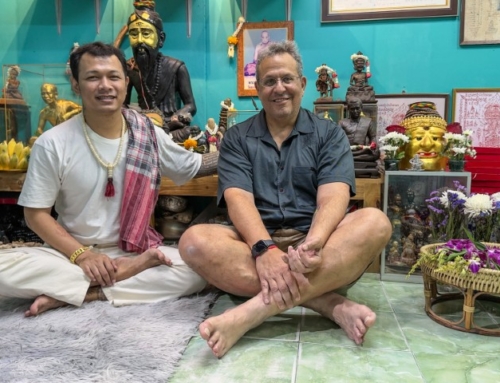
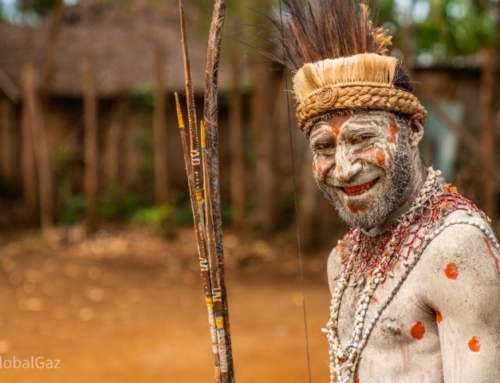
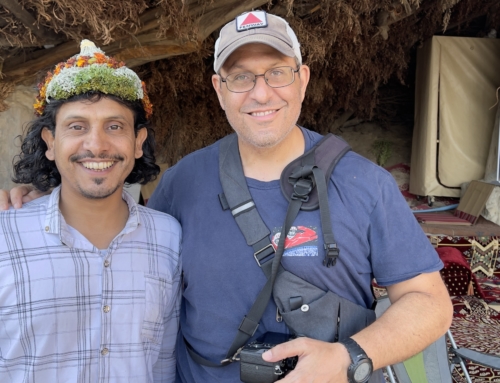
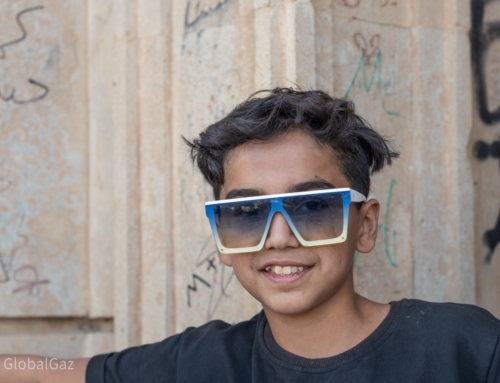
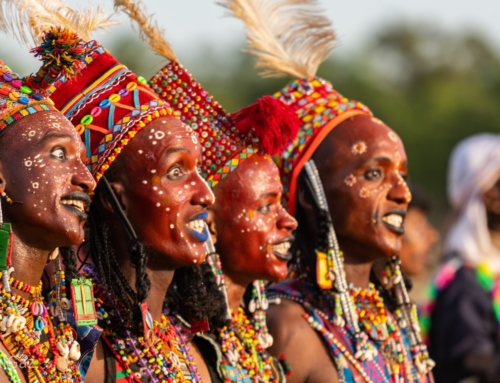
[…] Gaz goes to the remote, eastern part of Bhutan. I love remote places, give me more! Hint as in guest […]
Hi Ric,
It’s good that you could explore eastern Bhutan. I also love that part as cultures and traditions there are raw and authentic unlike in Thimphu and Paro where things have become different from their original forms to suit tourists.
However, it seems you have not visited Merak and Sakteng, which are villages of unique culture and life styles of semi-nomadic Bhutanese Brokpa. Maybe you can keep them for your next visit.
I guess I need to come back for a second visit!
[…] Visiting The Remote, Eastern Part Of Bhutan […]
[…] Visiting The Remote, Eastern Part Of Bhutan […]
[…] Visiting The Remote, Eastern Part of Bhutan […]
Not visiting Trongsa is our biggest regret. We had originally been scheduled to go there and then asked for a change to accommodate more hiking. The dzong is so amazing.
I would imagine some people get tired of the Dzongs…but I did not. And yes, Trongsa was amazing. 🙂
Hopefully, there will be a second visit. 🙂